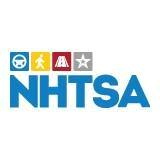GM's Cruise: A Rollercoaster Ride in Autonomous Driving
July 26, 2024, 11:08 pm

Location: United States, California, San Francisco
Employees: 1001-5000
Founded date: 2013
Total raised: $15.26B

Location: United States, District of Columbia, Washington
Employees: 10001+
Founded date: 1789

Location: United States, District of Columbia, Washington
Employees: 501-1000
Founded date: 1970
General Motors (GM) is navigating a stormy sea with its self-driving unit, Cruise. The latest news is a mix of ambition and caution. GM has decided to hit the brakes on its futuristic Origin vehicle, a model designed to operate without a steering wheel. Instead, the company is shifting gears to focus on a next-generation Chevrolet Bolt. This pivot reflects the turbulent waters Cruise has been sailing through, marked by regulatory hurdles and public scrutiny.
In 2022, GM sought permission from the National Highway Traffic Safety Administration (NHTSA) to deploy up to 2,500 Origin vehicles annually. These vehicles would operate without traditional human controls, like brake pedals or mirrors. However, the NHTSA has yet to respond. This regulatory uncertainty looms large, prompting GM to reassess its strategy. The decision to delay the Origin is a clear signal that the road ahead is fraught with challenges.
Cruise has been under a microscope since a serious incident last October. One of its robotaxis struck a pedestrian, dragging her for 20 feet. This accident sparked investigations from multiple agencies, including the NHTSA, the Justice Department, and the Securities and Exchange Commission. The fallout was swift. California revoked Cruise's permit to operate driverless vehicles, a significant blow to its ambitions.
Kyle Vogt, co-founder of Cruise, recently expressed his frustration. He likened GM's repeated setbacks to a football team that starts strong but fumbles the ball. This analogy resonates. GM has a history of losing its lead in the automotive race. Once a pioneer in electric vehicles during the 1990s, it now finds itself playing catch-up.
Despite these setbacks, GM remains optimistic. CEO Mary Barra recently announced that Cruise has resumed testing its robotaxis with human safety drivers in three cities. This cautious approach indicates a desire to rebuild trust and safety. Moreover, GM has hired a new CEO for Cruise, signaling a fresh start.
The potential for profit is enticing. Barra has projected that Cruise could generate $50 billion in annual revenue by 2030. However, the reality is stark. Since 2017, Cruise has lost over $8 billion. In January, GM announced a $1 billion cut in spending at Cruise, a move that underscores the financial strain.
Looking ahead, Cruise aims to resume fully autonomous rides by the end of this year. The company plans to start charging fares by early 2025. This goal is ambitious, but it comes with risks. The shadow of last year’s accident looms large. Public perception is fragile, and trust must be rebuilt.
The road to autonomy is littered with obstacles. Regulatory bodies are cautious, and public sentiment is wary. The technology itself is still evolving. While the promise of self-driving cars is alluring, the reality is complex. Safety must be the priority. The stakes are high, and the consequences of failure can be severe.
Cruise's journey is a reflection of the broader autonomous vehicle landscape. Many companies are racing to develop self-driving technology. Each faces its own set of challenges. The competition is fierce, and the pressure to deliver is immense. Yet, the potential rewards are equally significant.
As Cruise navigates these turbulent waters, it must balance innovation with responsibility. The company has a chance to lead in a transformative industry. But it must learn from past mistakes. Transparency, safety, and public trust are crucial.
In the end, the future of Cruise and autonomous driving hinges on a delicate balance. The company must innovate while ensuring safety. It must regain public trust while pushing the boundaries of technology. The road ahead is uncertain, but the destination is clear: a world where self-driving cars are a common sight.
In conclusion, GM's Cruise is at a crossroads. The decision to delay the Origin vehicle reflects a cautious approach in a high-stakes environment. The company is determined to return to the forefront of autonomous driving. However, it must navigate regulatory challenges and public scrutiny. The journey is fraught with risks, but the potential rewards are immense. As Cruise revs its engines for the next chapter, the world will be watching closely. The road to autonomy is long, but with careful steering, it may yet reach its destination.
In 2022, GM sought permission from the National Highway Traffic Safety Administration (NHTSA) to deploy up to 2,500 Origin vehicles annually. These vehicles would operate without traditional human controls, like brake pedals or mirrors. However, the NHTSA has yet to respond. This regulatory uncertainty looms large, prompting GM to reassess its strategy. The decision to delay the Origin is a clear signal that the road ahead is fraught with challenges.
Cruise has been under a microscope since a serious incident last October. One of its robotaxis struck a pedestrian, dragging her for 20 feet. This accident sparked investigations from multiple agencies, including the NHTSA, the Justice Department, and the Securities and Exchange Commission. The fallout was swift. California revoked Cruise's permit to operate driverless vehicles, a significant blow to its ambitions.
Kyle Vogt, co-founder of Cruise, recently expressed his frustration. He likened GM's repeated setbacks to a football team that starts strong but fumbles the ball. This analogy resonates. GM has a history of losing its lead in the automotive race. Once a pioneer in electric vehicles during the 1990s, it now finds itself playing catch-up.
Despite these setbacks, GM remains optimistic. CEO Mary Barra recently announced that Cruise has resumed testing its robotaxis with human safety drivers in three cities. This cautious approach indicates a desire to rebuild trust and safety. Moreover, GM has hired a new CEO for Cruise, signaling a fresh start.
The potential for profit is enticing. Barra has projected that Cruise could generate $50 billion in annual revenue by 2030. However, the reality is stark. Since 2017, Cruise has lost over $8 billion. In January, GM announced a $1 billion cut in spending at Cruise, a move that underscores the financial strain.
Looking ahead, Cruise aims to resume fully autonomous rides by the end of this year. The company plans to start charging fares by early 2025. This goal is ambitious, but it comes with risks. The shadow of last year’s accident looms large. Public perception is fragile, and trust must be rebuilt.
The road to autonomy is littered with obstacles. Regulatory bodies are cautious, and public sentiment is wary. The technology itself is still evolving. While the promise of self-driving cars is alluring, the reality is complex. Safety must be the priority. The stakes are high, and the consequences of failure can be severe.
Cruise's journey is a reflection of the broader autonomous vehicle landscape. Many companies are racing to develop self-driving technology. Each faces its own set of challenges. The competition is fierce, and the pressure to deliver is immense. Yet, the potential rewards are equally significant.
As Cruise navigates these turbulent waters, it must balance innovation with responsibility. The company has a chance to lead in a transformative industry. But it must learn from past mistakes. Transparency, safety, and public trust are crucial.
In the end, the future of Cruise and autonomous driving hinges on a delicate balance. The company must innovate while ensuring safety. It must regain public trust while pushing the boundaries of technology. The road ahead is uncertain, but the destination is clear: a world where self-driving cars are a common sight.
In conclusion, GM's Cruise is at a crossroads. The decision to delay the Origin vehicle reflects a cautious approach in a high-stakes environment. The company is determined to return to the forefront of autonomous driving. However, it must navigate regulatory challenges and public scrutiny. The journey is fraught with risks, but the potential rewards are immense. As Cruise revs its engines for the next chapter, the world will be watching closely. The road to autonomy is long, but with careful steering, it may yet reach its destination.
